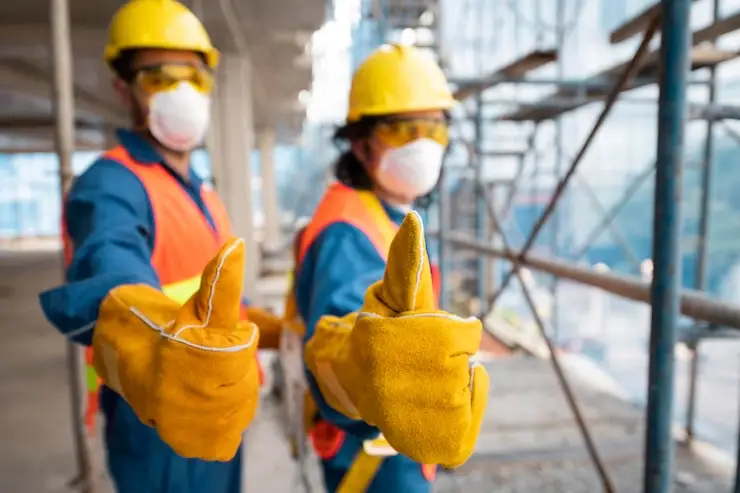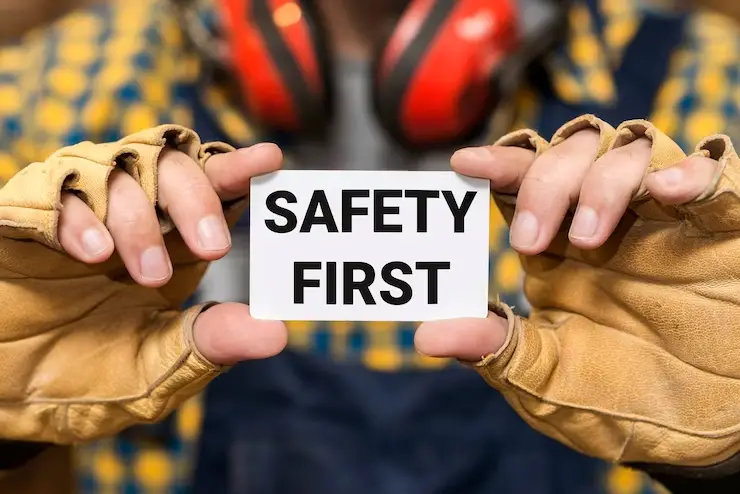Workplace safety is a critical aspect of any organization. The promotion of a healthy workplace and the reduction of the likelihood of accidents and injuries are both benefits of ensuring employees’ well-being.
Implementing effective safety measures requires a comprehensive understanding of workplace hazards and the implementation of proper protocols.
In this blog post, we’ll look at five simple strategies for enhancing workplace safety and lowering the likelihood of accidents. For expert guidance on workplace safety, consider consulting with workplace health and safety consultants.

Prioritize Employee Training and Education
Comprehensive employee training and education programs are paramount in enhancing workplace safety. It is essential for all employees, irrespective of their positions, to undergo thorough training that covers workplace safety protocols, hazard identification, and proper equipment usage. Regular refresher courses and updates on safety practices are vital to keep employees well-informed and vigilant.
Organizations may provide their workers with the knowledge and skills needed to provide a safe working environment by investing in training programs. Employees are given the tools they need to address dangers head-on and take preventive action to protect their own safety as well as the safety of their coworkers.
An organization’s culture of safety and accountability is fostered by such a proactive approach to training, which lowers the number of accidents and injuries.
Conduct Regular Safety Inspections and Risk Assessments
Regular safety inspections and risk assessments play a critical role in safeguarding workplace safety. These proactive measures enable organizations to identify potential hazards, such as faulty equipment, hazardous materials, or unsafe work practices.
By conducting systematic inspections, organizations can promptly address any identified issues and implement necessary corrective measures to minimize the risk of accidents or injuries.
Collaborating with workplace health and safety consultants brings valuable expertise and insights to the process of conducting comprehensive safety inspections and risk assessments.
These consultants possess specialized knowledge and experience in identifying potential risks, evaluating safety protocols, and recommending effective preventive measures. Their expertise can provide organizations with a thorough understanding of safety vulnerabilities and help them develop targeted strategies to mitigate risks.

Promote a Culture of Safety
Creating a culture of safety is a fundamental aspect of ensuring a secure workplace environment. It entails fostering an atmosphere where safety is prioritized and employees are encouraged to actively engage in safety initiatives
Organizations can promote this culture by acknowledging and rewarding safe behavior, fostering open communication regarding safety concerns, and actively involving employees in safety committees or programs.
Also Read: Aluminum Scaffolding Tower – The Safer Way to Work at Height
When safety becomes deeply ingrained in the organizational culture, employees develop heightened awareness, accountability, and proactivity in maintaining a safe work environment.
By consistently recognizing and appreciating safe practices, organizations reinforce the importance of safety and motivate employees to make it a top priority in their daily activities. Encouraging open dialogue about safety concerns allows employees to voice their observations, ideas, and suggestions, leading to a collaborative approach to enhancing safety measures.
Active involvement in safety committees or programs empowers employees to actively contribute to safety initiatives, share their expertise, and collectively work towards a safer workplace.
Also Read: Protecting Your Wellbeing: 5 Safety Tips for Construction Workers
Provide Personal Protective Equipment (PPE)
Personal protective equipment (PPE) is of utmost importance in mitigating workplace hazards and ensuring the safety of employees.
Employers should conduct thorough assessments to determine the specific PPE requirements for each job role and provide the necessary equipment, such as helmets, gloves, goggles, or ear protection.
Regular inspections and maintenance of PPE are crucial to ensure their continued effectiveness and reliability in protecting employees. This includes checking for any signs of wear and tear, damage, or expiration dates, and promptly replacing any compromised equipment.
Proper training on the correct usage and maintenance of PPE is equally vital to maximize their protective benefits. Employees must receive comprehensive instructions on how to properly wear, adjust, clean, and store their PPE to ensure its optimal performance and longevity.
By prioritizing the provision, inspection, maintenance, and training related to PPE, organizations demonstrate their commitment to employee safety and minimize the risk of workplace accidents and injuries.
Also Read: Choosing Safety Footwear
Encourage Reporting and Investigation of Incidents
Establishing a reporting system for incidents, near-misses, or potential hazards is crucial for identifying trends and taking preventive actions.
Encourage staff to immediately report any safety issues or occurrences, and make sure they may do so without fear of retaliation. Investigate situations extensively to determine the underlying reasons and put corrective measures in place to stop similar incidents from happening again.
By fostering a transparent reporting and investigation process, organizations can continuously improve their safety protocols and prevent future accidents.
Conclusion
Employers and employees both have responsibility for maintaining workplace safety. Organizations can significantly increase workplace safety and lower the risk of injuries by putting these five simple measures into practice: prioritizing employee training and education; carrying out routine safety inspections and risk assessments; encouraging reporting and investigation of incidents; providing personal protective equipment (PPE); and promoting a culture of safety. Remember, workplace safety is an ongoing effort that requires continuous evaluation, improvement, and collaboration. By prioritizing the well-being of employees, organizations not only create a safer work environment but also foster a culture of care and productivity.
